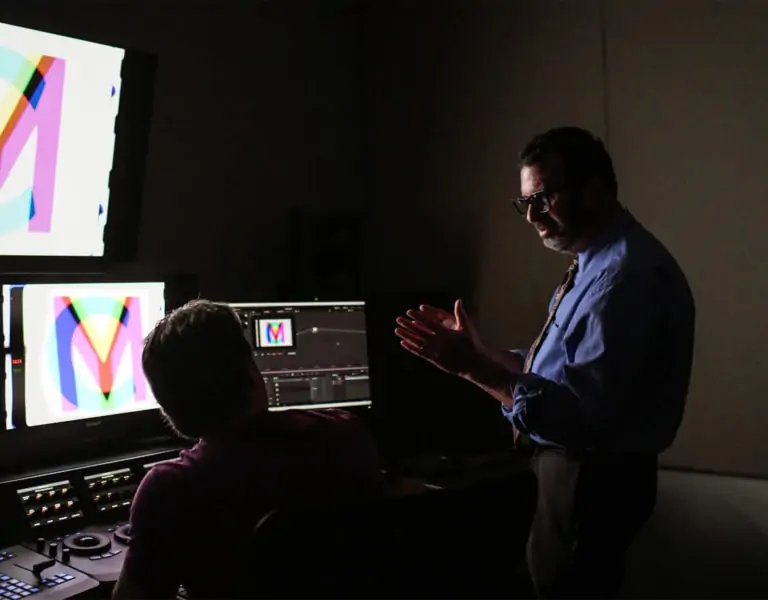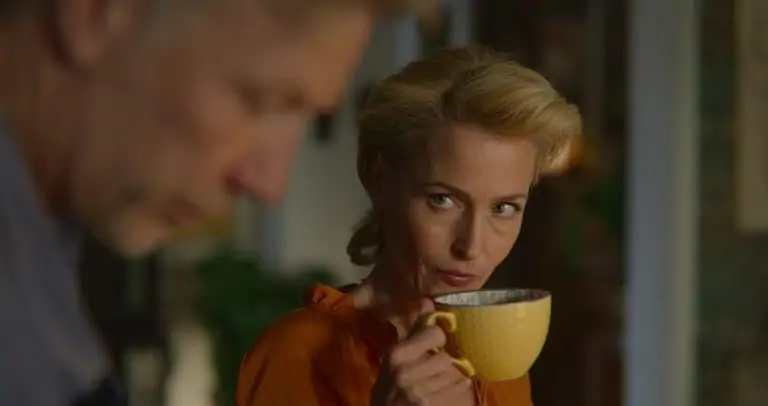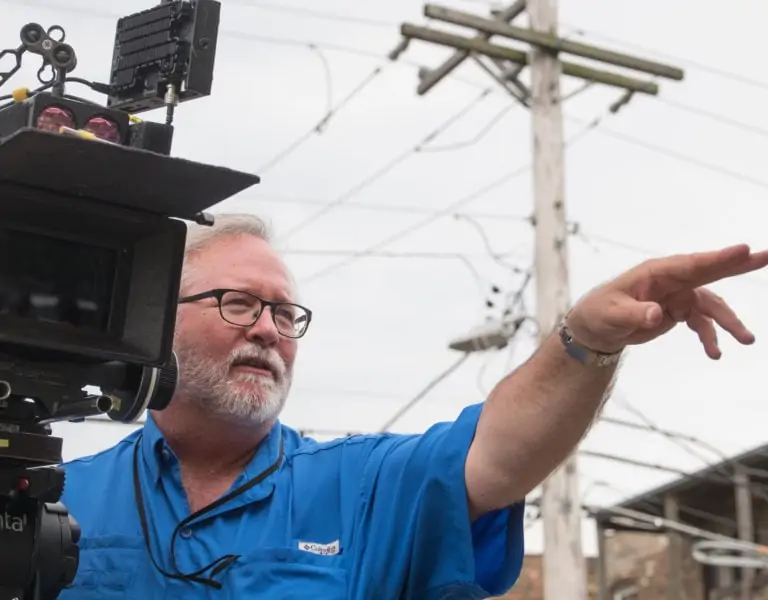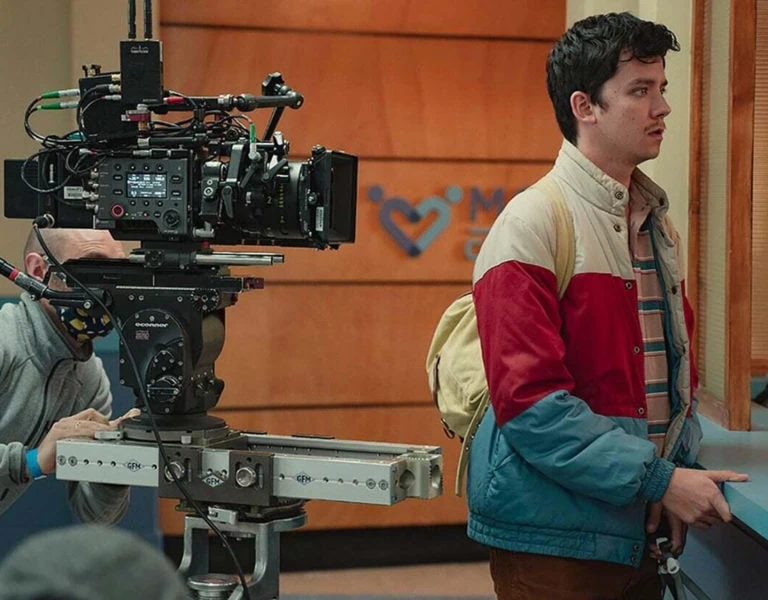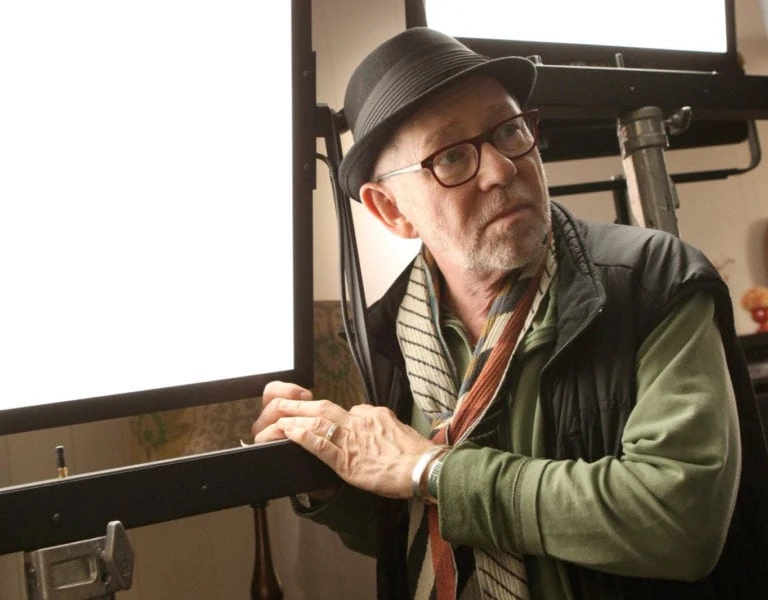I’m going to start with one of those “When I was your age, I had to walk miles in the snow…” Well actually I did because I’m from Chicago. But that’s not the story I want to tell.
I want to talk about something much more sexy, Emulsion Speed. The ‘’when I was young…” part was that all we had was 25ASA Tungsten ECO 16mm film when I started shooting. Put an 85 on and you’re down to 16ASA. But at least Daylight could be very bright. But what if you are in a vast factory that makes mufflers or something and it’s lit with a few windows and all you have is half a dozen Colortran 650s and a Lowel Light Kit? I still to this day don’t know how we lit scenes like that. There was a lot of creativity just to get an image.
Those were the kinds of situations we learned from in those days. But if you were working for a studio or a network (remember, there were only three networks to choose from in the US), you had to deliver whatever Broadcast Standards each network said was bright enough.
I once got fired because of a night scene that I decided to get creative with. I had two principals standing in a doorway talking to each other. So, I had it figured out that when one of the actors was talking to the other, that actor would be lit and the silent one was in shadow. Then the scene shifted, and the second man talked so he was lit and the other slid into the dark side.
It didn’t take long. We shot on Tuesday, saw dailies on Wednesday, and I was gone by Friday. “WHERE WAS THE LIGHT ON HIS FACE!!! WE CAN’T SEE HIS EYES.”
I know you think I’m going to talk about how things have progressed through the decades. Well, I am, because I’m really excited about what we can do with images in todays technological environment.
The March-Of-Time! We should hear bugles play. The steady increase in emulsion sensitivity really was a slow slog. It usually took Kodak years to bring out new emulsions. And they were reluctant to do anything exciting. I think they believed that T-Grain was as far as they would ever have to go. They continued to improve T-Grain technology. And they did eventually get us to 500ASA in around 1989. But then they thought that was as fast as they needed to go.
The next decade saw vigorous development of digital imaging. Digital was starting to nip at the heels of tradition film imaging. I know a number of us told the C-Suite people at Kodak to make faster film. The answers we got with a smile and a pat on the shoulder was, “Nobody wants faster film. They want better grain and sharpness. We know what we are doing.” They were so worried that digital would eat into their film sales that they made digital the enemy of film. And digital ate away profits like thousands of little Pac-Men.
But eventually they did develop an 800ASA stock around the time when we knew that digital cameras would have a nominal sensitivity of 800ASA. It was just in time for me to “convince” the producers of Donnie Darko to think that 5289, as it was called, would allow us to use anamorphic lenses to solve the problem of needing more light for anamorphic. I had never tested the emulsion and some of the Kodak insiders told me that I wouldn’t like it because of the grain. Wrong. I loved it! I had been using 3200Tmax film for stills since it came out. The grain was part of my expression. 800 stock was right up my alley.
During the time before streaming and digital exhibition, each of the networks had Broadcast Technical Standards departments. If a company delivered a print that had a lot of darkness in it the network would reject it and make us reprint brighter. How insulting.
As streaming came online, the management understood artistic intent much better than the networks. And as we learned to control digital acquisition, we all got better at forcing imagery into darker and richer territories of expression.
The current crop of cameras has developed into spectacular imagers that can capture the deepest subtlest details in the shadows that we can see live, but never before have we been able to capture these images in motion imaging. Since I am used to working with higher sensitivity imagers, I shoot all my night exteriors and interiors at an exposure index (EI) of 3200. That is fourteen times more sensitive than where I started at 25ASA reversal ECO stock. I saw a DP back then named Jake Lafloure at Wilding Studios in Chicago who could hold his hand up and feel the heat of a light and call the stop.
The difference between twice the amount of light, one stop at 100 FC is a lot more heat (from incandescent bulbs) when you get to 200FC. But from 10FC to 20FC you could never feel anything.
We’re fortunate to have the tools we have today. But we must continue to demand more and better. We don’t need more resolution. The “K” wars should end, and the manufacturers should concentrate on better and deeper colour resolution for instance. Some companies have worked on image improvements that are much more subtle than just increasing resolution. The Venice, Arriflex, and Canon have improved in important ways. Canon, for instance, fires all their photosites randomly, so at the highest sensitivities if you do get any noise it looks like film grain.
It feels like a golden age of motion imaging where we can express our dark selves and not get fired because we like it in the shadows.
